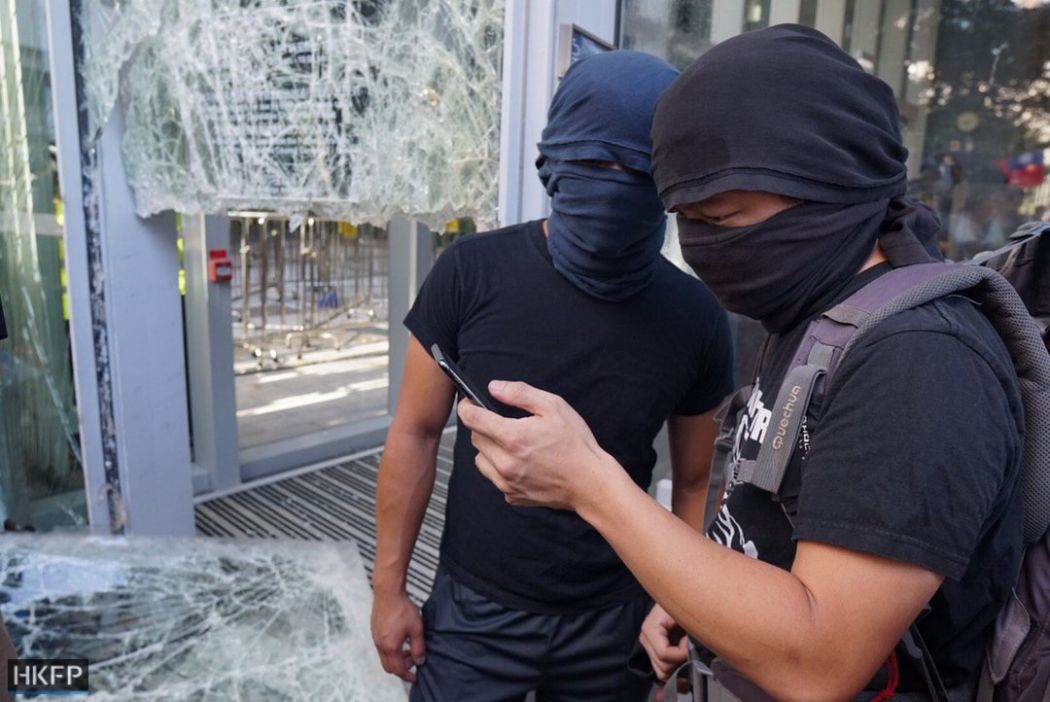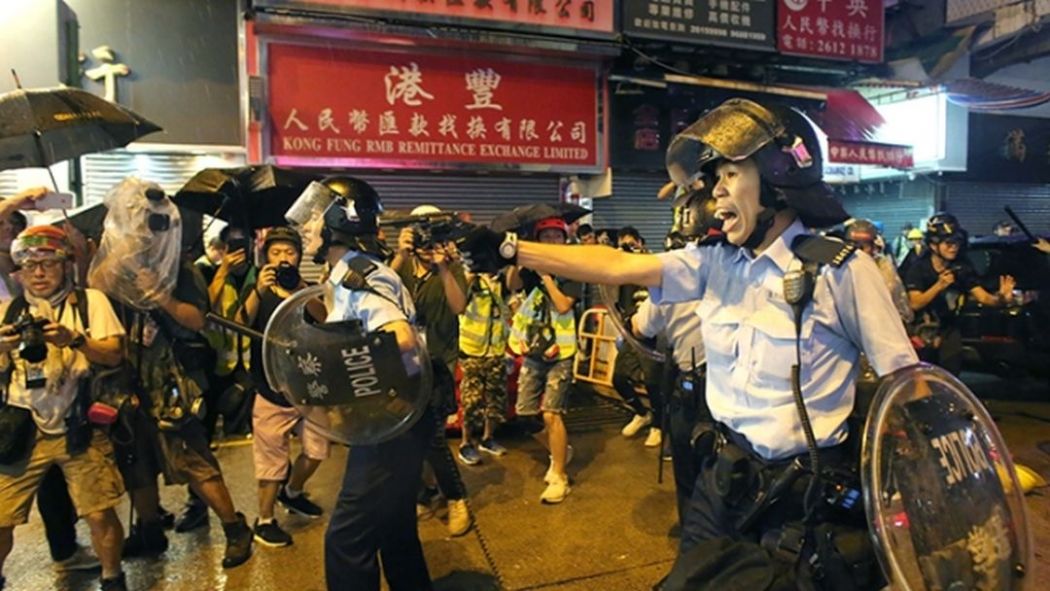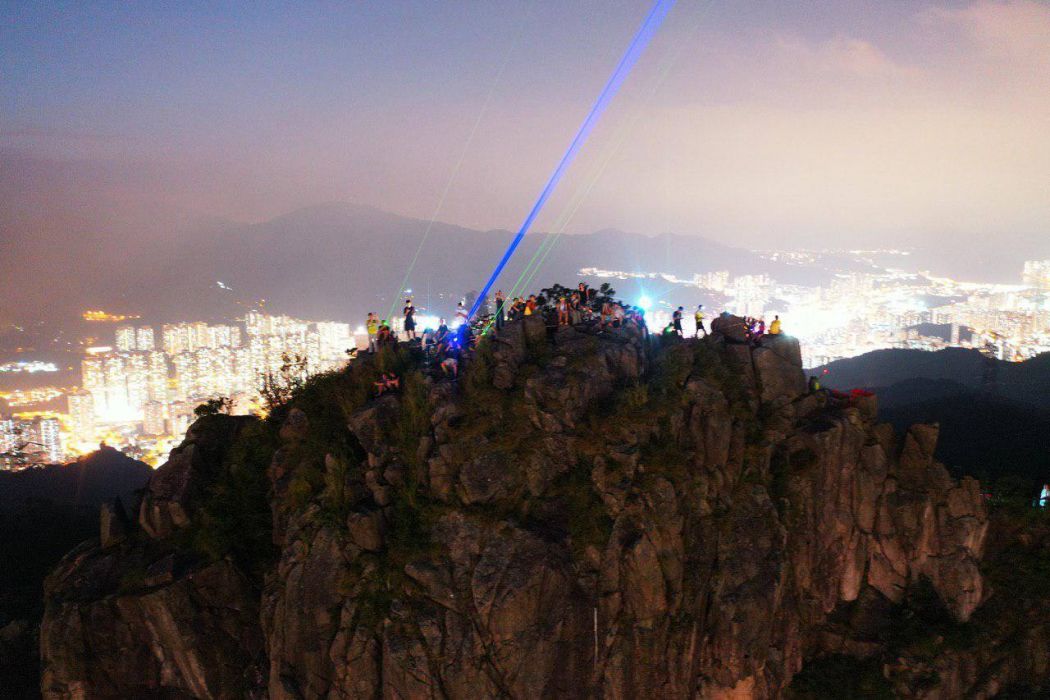Hong Kong’s leaderless protest movement has been described as having “self-learning artificial intelligence” owing to how quickly demonstrators learn and react when on the streets. Meanwhile, the Chinese University’s Francis Lee has said the protests mimic open source technology, wherein a central code is released and another person easily picks it up to develop their own products.
But – 14 weeks in – protesters have not only been looking to improve their tactics on the frontlines, they are also in the middle of a chess game with the Hong Kong and Beijing authorities.

Every time a protest is over, posts flood the Reddit-like LIHKG forum – one of the main channels for protesters to discuss tactics. Users review tactics and come up with new suggestions.
“Cancel all district-level marches and rallies,” one post said last month. “Let’s have all of the September protests at the airport.”
Since the police deployed a higher level of force with water cannons and live warning shots, some protesters have sought to adapt their tactics instead of focusing on street-level skirmishes. It may involve a protest at the airport again, it could be class boycott, or it could be a general strike – as long as it minimises the risk for frontline protesters.
See also: The organisation and future of Hong Kong’s ‘open source’ anti-extradition law movement
The fundamental difference between the ongoing anti-extradition law protests and the 2014 Umbrella Movement is that the current ones are fluid, instead of static. Whereas activists in 2014 sought to defend their street occupation zones, this summer’s protesters have taken their grievances away into the districts.
Many reflected on the failure of one particular day in 2014 – November 30 – when student leaders opted to escalate the protests after more than two months of holding on to the Admiralty base camp outside the legislature. The goal was to occupy Lung Wo Road and halt traffic along a main Hong Kong Island artery. However, police cleared the area quickly and the plan for escalation was deemed too little, too late.

Protesters nowadays realise they have little need to defend or expand any occupation zones. Rather, the goal is to quickly come up with creative ways to increase the cost of governance.
Setting a deadline
The current protests stemmed from the government’s decision to push through an extradition law, after a march on June 9 which organisers said a million Hongkongers attended. Three days later, protesters surrounded the Legislative Council in an attempt to stop the bill from passing, leading to physical clashes with the police.
On June 15, the chief executive suspended the bill. But the next day, the Civil Human Rights Front still pressed on with another march, which it said attracted two million people.

Following these early protests, a pattern emerged whereby protesters would set a deadline for the government to respond to their demands, or they would otherwise escalate their actions. They went on to surround the police headquarters, besiege government offices, and also formed roadblocks – often leading to clashes with the police.
The movement itself does not have a central command. Rather, the LIHKG forum runs in a way similar to Reddit as threads become more visible when there are more upvotes as well as comments. New measures have been installed to prevent spamming, but the system allows the most popular ideas to rise to the top.
The Hong Kong government has only responded to one of the protesters’ demands, after it withdrew the reviled extradition bill from the legislature. But this has not stopped protesters from regularly setting new deadlines, and publishing new schedules to continue pushing the government.

After weekend protests, there are usually dozens of threads either calling for new deadlines, or making plans ahead of the upcoming weekend’s protests.
For instance, after a month of consecutive weekends of violent protest, protesters agreed that the August 18 march should be a calmer one. This “round of peaceful protest” was intended to demonstrate that protesters were not all intentionally violent.
The government still made no immediate concessions after the march, though organisers said 1.7 million people participated. This paved way for a new round of confrontational protests with the police a week later in Kwun Tong and Tsuen Wan.

Escalations, however, are not without limits – at least not for some protesters. After the airport clashes on August 13, in which protesters prevented tourists from entering the restricted area to board flights, some returned to the airport the next day to apologise.
The apology plan was also discussed on dozens of threads on LIHKG, and several channels on the messaging app Telegram. It was not a tactic that was agreed by all protesters – nevertheless, when an initiative gains traction, there will be a groundswell of protesters who will carry it out.
Creative guerilla protests
Compared to 2014, protesters now do not have the burden of defending occupied sites. This change leaves them more freedom to come up with creative plans to respond to the latest government move or international situation.

The new situation in 2019 is that large protests occur mostly on weekends whilst weekdays see mostly low-key demonstrations, if any. This provides time and space for protesters to come up with new strategies.
Ahead of the G20 summit in June, protesters submitted petitions at foreign consulates. They also surrounded police headquarters and the office of Secretary for Justice Teresa Cheng.
In July, protesters – for the first time – successfully stormed the Legislative Council building in one of the most symbolic protest actions. They conducted several district-level marches, including one to the Express Rail Link’s West Kowloon terminus to spread their message to mainland tourists. Thousands of elderly people have also marched, earning respect from protesters of different ages. Airport sit-ins began in August, whilst “Lennon Wall” message boards spray up across the city.

As the movement wore on, more new forms of protests emerged, such as August’s general strike and a civil servants’ rally. Police stations across Hong Kong have often been surrounded and more than 200,000 joined a human chain on the 30th anniversary of the Baltic Way.
Beijing has threatened to use force against demonstrators, and has urged companies to fire employees who in any way support the movement. However, the authorities appear to be running on a slower operating system and Hong Kong protesters will likely invent new ways to resist as the pressure increases.
Hong Kong Free Press relies on direct reader support. Help safeguard independent journalism and press freedom as we invest more in freelancers, overtime, safety gear & insurance during this summer’s protests. 10 ways to support us.

